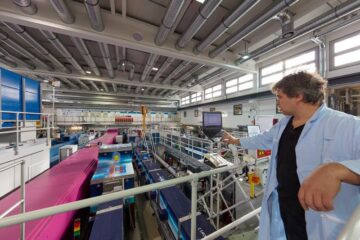Aptameres for Treatment and Diagnosis of Diseases Seropositive for Autoantibodies

<strong>Technology</strong><br>
We offer the new application of the known thrombin aptamer Arc183– initially developed as a anticoagulant for thrombin inhibition – for the highly specific binding and neutralization of autoantibodies against G-protein coupled receptors (AAB) such as adrenergic alpha-1-, adrenergic beta-1- and beta-2 receptors, the endothelin 1 ETA receptor, the muscarinic M2 receptor, the angiotensin II AT1 receptor, and/or the PAR receptors. These AABs are not only present in defined cardiovascular diseases (e.g. idiopathic dilated cardiomyopathy, Chagas’ cardiomyopathy, peripartum cardiomyopathy, myocarditis, hypertension, pulmonary hypertension and malignant hypertension) but they are also present in other diseases, e.g. Chagas’ megacolon, Chagas’ megaoesophagus, Chagas’ neuropathy, glaucoma, diabetes mellitus, Alzheimer’s disease, benign prostatic hyperplasia, psoriasis, scleroderma, Raynauld’s syndrome and kidney allograft rejection. The pathogenetic function of the AABs is well documented, especially for cardiomyopathies and kidney rejection, and the removal of AABs by apheresis and treatments for AAB neutralization are under investigation. The aptamer strongly inhibits the agonistic effect of patients’ AABs via their detected function, as demonstrated in a bioassay that analysed the beating frequency of rat cardiomyocytes. The aptamer was also found to clear human serum of AABs when coupled to an apheresis column. <br><br> <b>Benefits:</b><ul> <li>Novel second medical indication for the thrombin aptamer Arc 183</li> <li>Possible therapeutic applications in diseases positive for AABs against G-protein coupled receptors </li> <li>IC50 values of 100 nM or less in a rat cardiomyocyte beating assay</li> <li>Suitable as specific binder in apheresis: An alternative to the costly and risky apheresis process based on unspecific immunoadsorption </li></ul> <p><strong>IP Rights</strong><br> European patent applic.and US provisional applic. (07/2011)<br> PCT Application (02/2012) <br><br> <strong>Patent Owner</strong><br> Charité – Universitätsmedizin Berlin<br> Max-Delbrück – Centrum für Moleku-lare Medizin Berlin-Buch
Weitere Informationen: PDF
ipal GmbH
Tel.: +49 (0)30/2125-4820
Ansprechpartner
Dr. Dirk Dantz
Media Contact
Alle Nachrichten aus der Kategorie: Technologieangebote
Neueste Beiträge

Bakterien für klimaneutrale Chemikalien der Zukunft
Forschende an der ETH Zürich haben Bakterien im Labor so herangezüchtet, dass sie Methanol effizient verwerten können. Jetzt lässt sich der Stoffwechsel dieser Bakterien anzapfen, um wertvolle Produkte herzustellen, die…

Batterien: Heute die Materialien von morgen modellieren
Welche Faktoren bestimmen, wie schnell sich eine Batterie laden lässt? Dieser und weiteren Fragen gehen Forschende am Karlsruher Institut für Technologie (KIT) mit computergestützten Simulationen nach. Mikrostrukturmodelle tragen dazu bei,…

Porosität von Sedimentgestein mit Neutronen untersucht
Forschung am FRM II zu geologischen Lagerstätten. Dauerhafte unterirdische Lagerung von CO2 Poren so klein wie Bakterien Porenmessung mit Neutronen auf den Nanometer genau Ob Sedimentgesteine fossile Kohlenwasserstoffe speichern können…

















